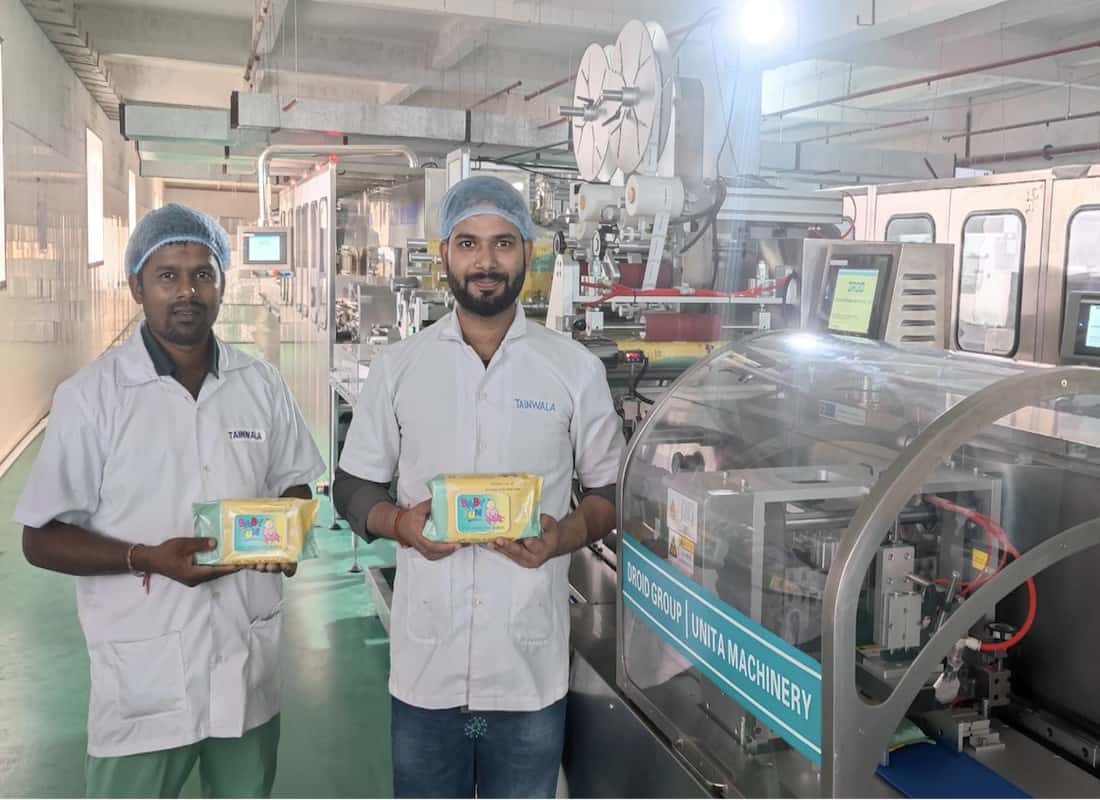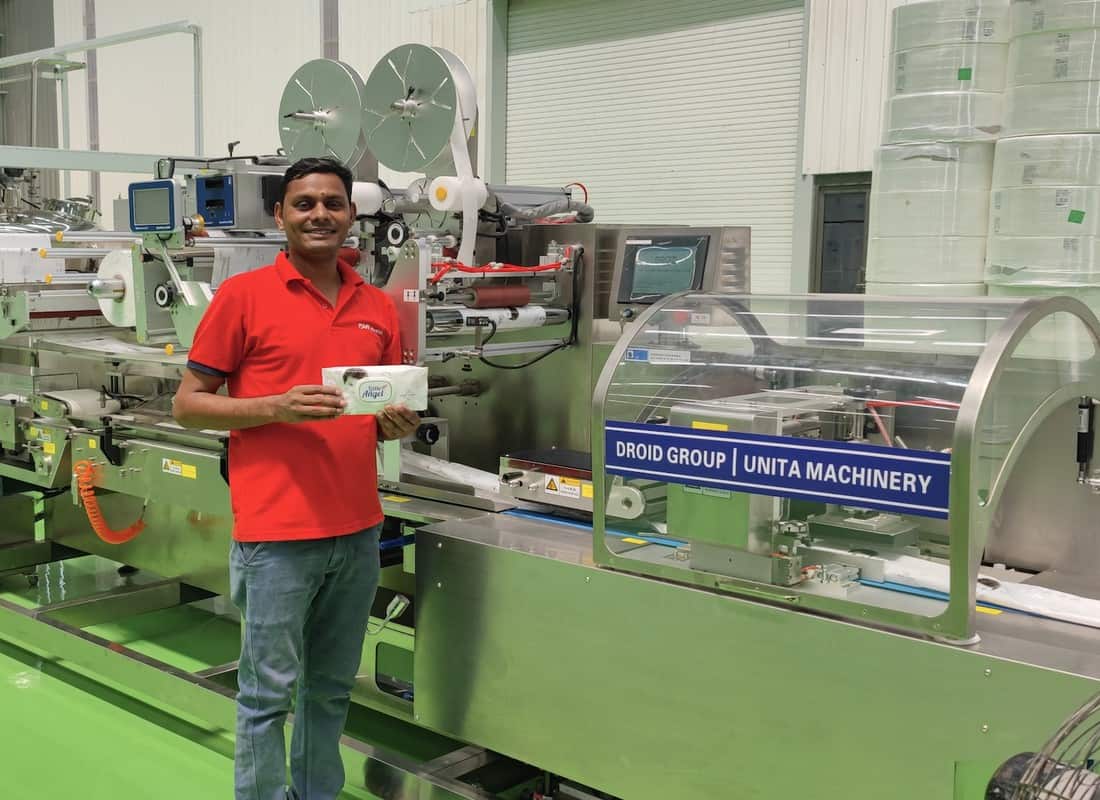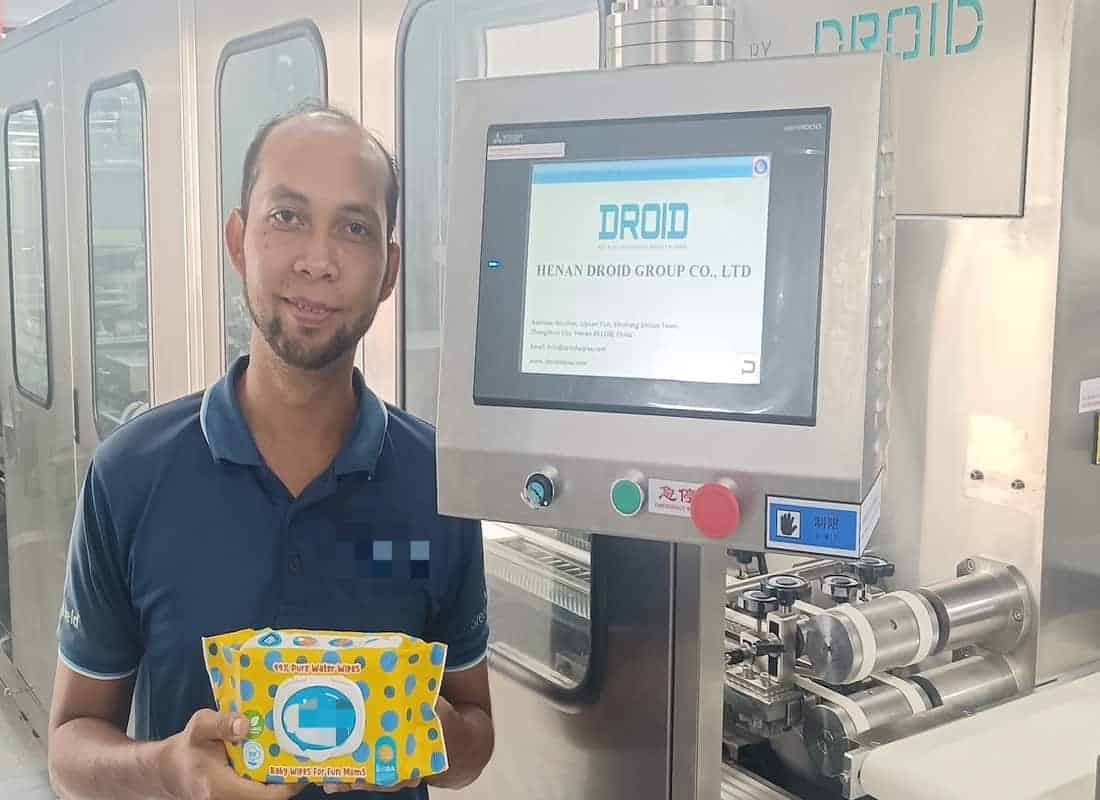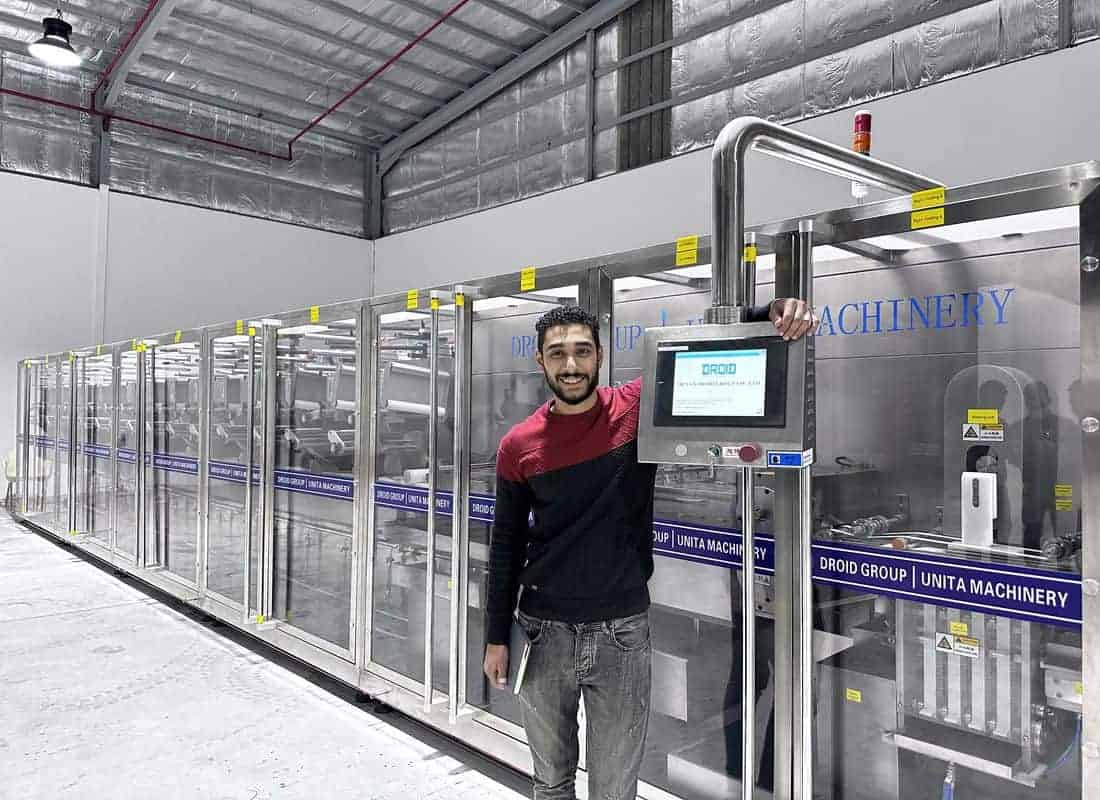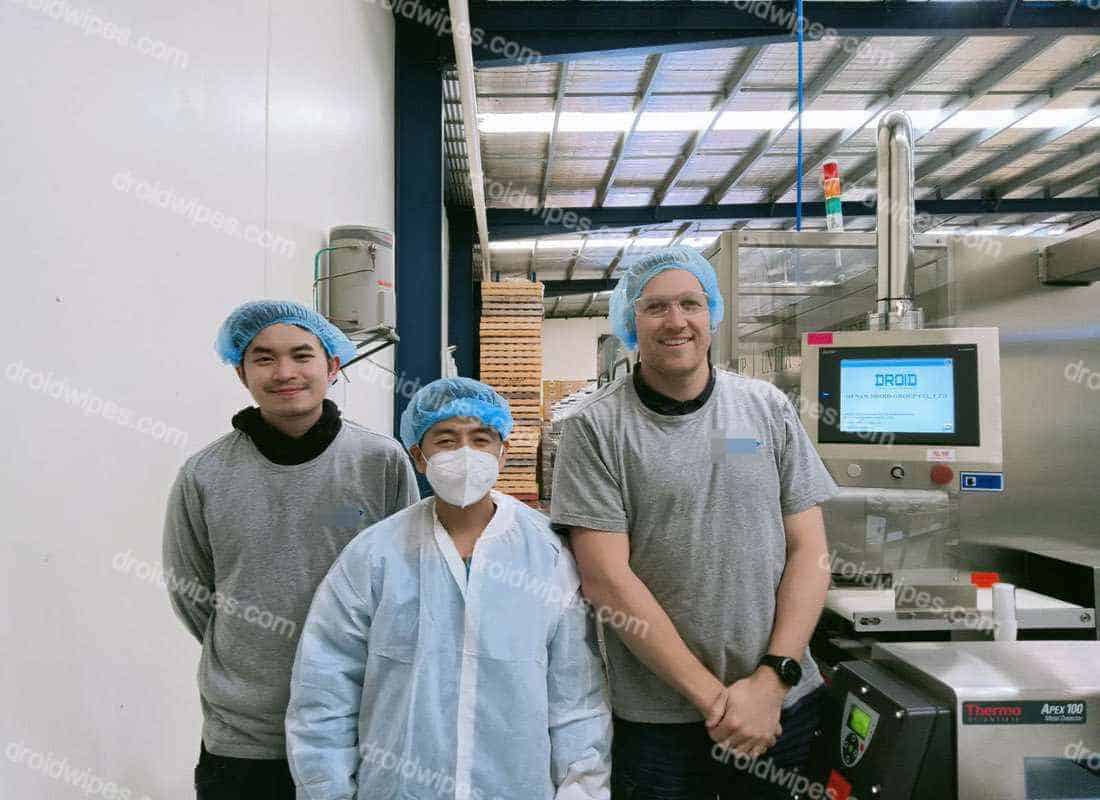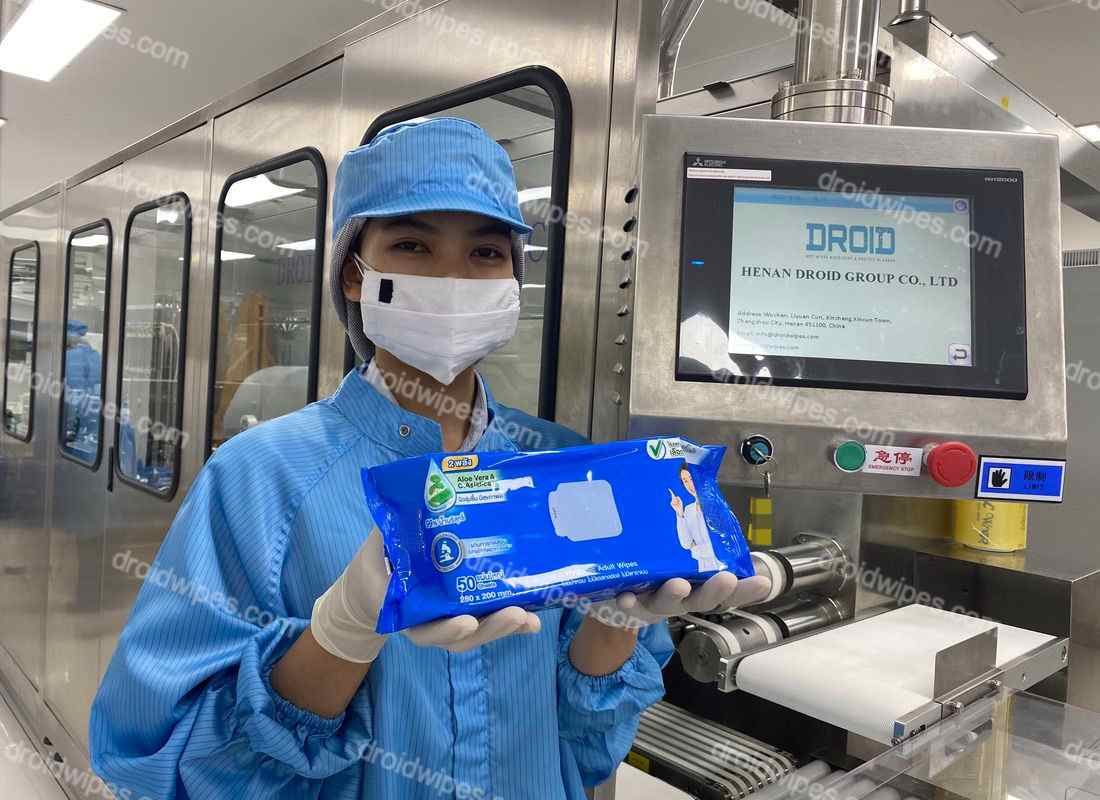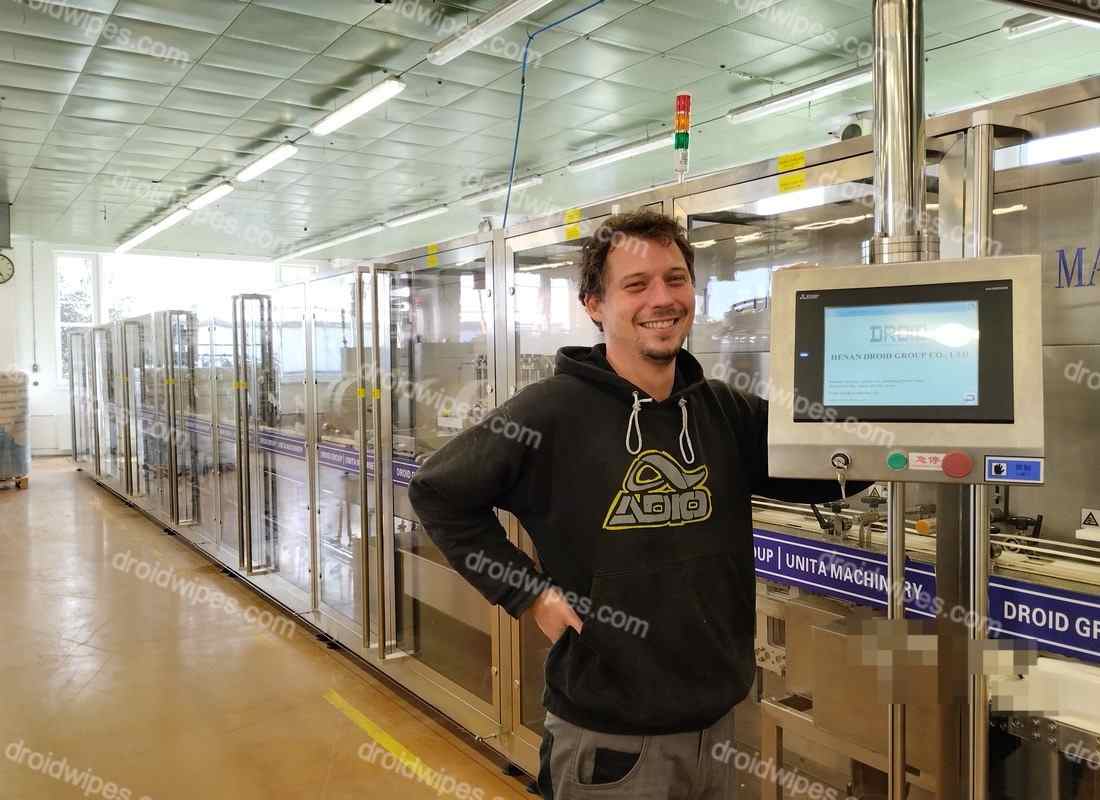Advanced Folding Mechanisms for Precision and Speed
In the wet wipes manufacturing sector, folding mechanisms are crucial for ensuring product efficiency and uniformity. Uneven folds, material waste, and slower production rates might result from traditional processes, which are often manual or semi-automated. With increased automation and accuracy, modern folding technologies have revolutionised this step.
To produce perfect folding patterns, contemporary wet wipers use servo-driven technology and real-time monitoring. Without requiring a lot of manual labour, these systems automatically adapt to various wipe sizes, materials, and folding styles, such as Z-fold, C-fold, or custom designs. Consistent, superior folds that adhere to stringent industry requirements are the end product.
Another significant benefit is speed. Production time can be drastically reduced by using sophisticated machines that can perform thousands of folds per minute. In addition to increasing operational efficiency, this increased throughput enables producers to swiftly expand production to satisfy growing demand. Additionally, regular folding reduces product rejections, which saves money and labour.
Intelligent sensors built into many of these systems can quickly identify and fix misalignments. Problems are fixed immediately, reducing downtime and maintaining output.
To put it simply, sophisticated folding mechanisms combine speed, precision, and adaptability—essential elements that provide producers with a competitive advantage by preserving high-quality standards, cutting costs, and saving time.
Real-Time Quality Control with AI Integration
In the competitive wet wipes industry, maintaining consistent product quality is crucial for meeting customer demands and adhering to stringent requirements. Real-time quality control driven by AI has revolutionised the industry by enabling manufacturers to achieve unparalleled accuracy and reliability.
Sensors and cameras are used by contemporary wet wipes machines equipped with AI algorithms to continuously monitor every step of the manufacturing process. These technologies identify problems such as incorrect labelling, packing defects, uneven wetness, and improper folding. The machine reduces waste and keeps faulty products from reaching customers by immediately adjusting settings or stopping production when an issue is detected.
The capacity of AI to learn and improve over time is one of its most notable features. Machine learning models can identify patterns in past data and anticipate potential problems before they arise, such as minute variations in material thickness or machine performance, which can prompt timely maintenance or repairs. Consistent quality and more efficient operations are guaranteed by this predictive approach.
Complete transparency and traceability are also provided by real-time AI monitoring, which offers comprehensive reporting and analytics on production performance. These insights may be used by manufacturers to improve overall efficiency, comply with regulations, and optimise procedures.
AI-driven quality control enhances accuracy, minimises downtime, prevents costly recalls, and fosters customer trust by replacing laborious and error-prone human inspections. AI integration is now necessary—not optional—for wet wipes manufacturers seeking to increase production and enhance their brand.
Energy-Efficient Operations
Today, manufacturers of wet wipes place a high premium on balancing productivity, sustainability, and cost-effectiveness. Energy-saving technology in contemporary wet wipes machines addresses this issue by reducing power consumption without compromising performance, enabling businesses to lower operational expenses while meeting increasing environmental and regulatory requirements.
Variable frequency drives (VFDs), which maximise motor speed and torque so energy is only used when required, are a significant breakthrough. Machines automatically reduce power consumption during maintenance or slower production cycles, which results in significant long-term savings. VFDs provide a more intelligent and adaptable solution than conventional systems, which operate at maximum capacity regardless of demand.
Heat recovery technology is another innovation. Modern machinery collects and repurposes surplus heat from processes such as drying or sealing, either to maintain a consistent temperature or to warm up subsequent manufacturing steps. This recycling significantly reduces overall energy use and related expenses.
Efficiency is further increased by real-time energy monitoring. Manufacturers can uncover inefficiencies, identify high-consumption areas, and refine processes for more efficient and lower-energy operations by utilising sensors and software.
These developments also support sustainability objectives. Manufacturers can fulfil environmental regulations and attract eco-conscious consumers by using less energy, resulting in a reduced carbon footprint. Nowadays, many companies emphasise energy-efficient production as evidence of their dedication to ethical manufacturing.
In summary, energy-efficient wet wipes machines provide enterprises a competitive and moral advantage in the current market by reducing expenses, increasing productivity, and promoting a greener future.
Automated Changeover Systems
Being able to swap between multiple goods, sizes, or formats swiftly is a significant competitive advantage in the fast-paced wet wipes sector. Conventional manual changeovers are labour-intensive and sluggish, often resulting in variable outcomes and expensive downtime. This procedure has been revolutionised by automated changeover systems, which provide flexibility, speed, and accuracy.
These devices can modify product parameters, such as fold types and pack sizes, with a single button press. Because they are pre-programmed with numerous configurations, producers can easily switch from baby wipes to disinfection wipes or any other variant without having to halt production for an extended period. Longer machine run times, less downtime, and increased overall production are the outcomes.
Consistency is another crucial advantage. Variability introduced by manual changes may lead to incorrect folding, poor sealing, or flawed packaging. However, automated systems carry out every modification with meticulous accuracy, guaranteeing consistent quality across all product lines and adhering to stringent regulatory requirements.
Additionally, this technology gives producers of seasonal goods or speciality markets unparalleled flexibility. Custom orders and small quantities can be processed quickly, enabling companies to respond more effectively to changing customer needs and industry trends.
Wet wipes manufacturers have a strong tool to remain competitive, effective, and flexible in a continuously changing industry, thanks to automated changeover systems, which reduce downtime, guarantee uniformity, and facilitate quick product diversification.
Smart Inventory Management
Having the appropriate materials on hand in the proper time—without waste, overstocking, or expensive storage—is essential for wet wipes manufacturers to ensure efficient production. Stock shortages, delays, or surplus supplies are often the result of traditional inventory systems’ inability to provide real-time data. A more effective and data-driven approach is provided by innovative inventory management systems, which are now included in contemporary wet wipes machines.
At every stage, these systems monitor components, raw materials, and final goods using IoT sensors, data analytics, and real-time tracking. With a real-time view of inventory levels, manufacturers can ensure that necessary supplies, such as lotion, nonwoven fabric, and packaging materials, are always readily available. Automatic alerts avoid production stoppages by triggering timely replacement when stock falls below a certain level.
Demand forecasting is a significant benefit. Intelligent systems provide remarkably accurate predictions about material demands by examining past production data, seasonal trends, and market patterns. For instance, the system encourages early buying to prevent shortages if demand for disinfectant wipes increases during flu season.
These technologies also save expenses and reduce waste. Overstocking leads to spoilage and increased storage costs, particularly for materials with limited shelf life. To save money and free up warehouse space, innovative systems monitor turnover rates, identify slow-moving inventory, and suggest adjustments to purchasing.
Intelligent inventory management minimises storage needs and maintains efficient lines by aligning with production schedules to guarantee just-in-time supply of raw materials. This technology also enhances resource sharing and coordination between locations for firms with several sites.
To put it simply, innovative inventory management solutions provide wet wipes businesses a competitive advantage in efficiency, cost control, and supply chain dependability by delivering real-time visibility, predictive insights, and leaner operations.
High-Speed Drying and Sealing
In the production of wet wipes, drying and sealing are essential processes that guarantee the wipes’ continued efficacy, sanitary quality, and durability. High-speed drying and sealing technologies are revolutionising production lines today, enabling producers to increase productivity while maintaining the highest standards of quality.
Drying Fast for Ideal Moisture Management
Modern systems swiftly and uniformly eliminate extra moisture using hot air or infrared drying. Because it heats the cloth directly and only targets the regions that need it, infrared drying is particularly effective in saving time, energy, and maintaining the texture and integrity of the wipe’s solution.
Accurate Sealing to Preserve Products
Wipes remain wet and free of contaminants thanks to sealing. To produce airtight packaging, high-speed machines use heat or ultrasonic sealing. Sensitive materials benefit greatly from ultrasonic sealing, which creates robust seals without excessive heat and is compatible with a variety of packaging formats, including flow packs and canisters.
Quickness Without Sacrificing Quality
By processing thousands of wipes each hour, these systems can fulfil increasing demand without compromising quality. To minimise waste and ensure that only perfect goods come off the line, built-in sensors monitor moisture levels before sealing and identify misalignments or poor seals in real-time.
Efficiency That Reduces Waste and Expenses
High-speed drying and sealing systems reduce energy consumption, manpower requirements, and material waste by shortening production cycles, making operations more economical and environmentally friendly.
To put it simply, high-speed drying and sealing technologies enable wet wipes producers to maintain their competitiveness while consistently producing high-quality goods by combining speed, accuracy, and resource savings.
Remote Monitoring and Predictive Maintenance
Machine uptime and dependability are crucial for achieving production goals in today’s competitive wet wipes market. Manufacturers’ approaches to equipment management are being entirely transformed by remote monitoring and predictive maintenance, which transforms routine maintenance into a proactive, data-driven procedure fueled by the Internet of Things and sophisticated analytics.
Real-Time Information for Improved Management
Key performance metrics, including motor speed, temperature, pressure, and more, are tracked by Internet of Things (IoT) sensors on contemporary wet wiper machines and sent to a single dashboard that is available from any location. Anomalies, such as unusual vibrations or pressure fluctuations, can be quickly detected by operators, who can take action before they impact output.
Identifying Issues Before They Occur
Predictive systems utilise historical and real-time data to anticipate problems before they occur, rather than waiting for failures or adhering to strict maintenance schedules. For instance, a slow increase in motor vibration may indicate bearing wear, enabling repairs to be made before an expensive failure occurs. This focused strategy prolongs component lifetime, lowers emergency repair expenses, and decreases downtime.
More Cost-Effective Resource Allocation
Technicians may concentrate on essential activities rather than continuous inspections by automating routine monitoring. Centralised monitoring guarantees consistent performance and quality across all locations for operations involving several lines or facilities.
Data-Informed Choices for Enhancement
Manufacturers can identify trends, enhance machine design, and optimise maintenance schedules with the aid of the rich data gathered. Additionally, thorough records improve regulatory compliance and traceability.
Remote monitoring and predictive maintenance save expenses while promoting sustainability objectives by prolonging machine life, reducing waste, and averting unscheduled stoppages. These technologies provide wet wipes manufacturers a distinct advantage by ensuring more efficient operations, long-term reliability, and smoother performance.
Customizable Production Lines
The wet wipes industry caters to a diverse range of markets, each with distinct product requirements, spanning from industrial and medical applications to baby care and cosmetics. Production lines that provide flexibility without compromising efficiency are essential for manufacturers to remain competitive. Customizable production lines enable businesses to adapt their processes to particular goods, materials, and packaging.
Changing to Meet Market Demands
Makeup wipes, antibacterial wipes, and surface cleansers may all be produced from a single, reconfigurable line. Additionally, it can handle a variety of package styles, such as flow packs, canisters, or single sachets, which enables producers to react swiftly to changes in demand or seasonal patterns, such as during flu season.
Modular Architecture for Simple Updates
Because customizable lines are modular, new components—like labelling systems, sealing modules, or biodegradable material handlers—can be added or replaced without requiring a complete redesign. This minimizes downtime, reduces upgrade costs, and future-proofs the line.
Accuracy for Specialized Goods
For instance, rigorous moisture control, sterilization, and package integrity are required for medical-grade wipes. That accuracy is provided by customizable lines, which also accommodate various folding techniques, materials, and product sizes while preserving a high standard of quality.
Increasing Productivity and Creativity
Product changes are streamlined by automation and preset settings, which also minimize waste and downtime. This adaptability also promotes innovation since it allows firms to rapidly test new materials, packaging, or formulations without incurring significant expenditures.
Adaptable to Growth
Customizable lines can be developed in response to demand, allowing wet wipes manufacturers to start small and scale up without significant reinvestment.
To put it simply, wet wipe producers can develop, adapt to market changes, and maintain their competitiveness thanks to configurable manufacturing lines, which provide unparalleled variety, precision, and cost-effectiveness.
Innovative Wrapping and Labelling Solutions
Packaging in the cutthroat wet wipes industry does more than just contain the product; it also preserves freshness, strengthens brand recognition, and enhances convenience. Innovative design and cutting-edge technology are utilised in today’s creative wrapping and labelling solutions to improve quality, reduce costs, and meet evolving customer demands.
Freshness and Protection Initially
Contemporary sealing techniques, such as heat or ultrasonic sealing, ensure airtight packs that prevent leaks and contamination. Wipes stay fresh between uses thanks to resealable flow packs, snap lids, and adhesive closures—perfect for customers who are constantly on the go.
Quicker and More Intelligent Packaging
Today, everything from single sachets to canisters is handled with precision by high-speed automated devices that cut, wrap, and seal. Inbuilt sensors quickly identify flaws, such as misaligned seals, cutting down on waste and rework while preserving quality.
Labelling for Compliance and Branding
Labels serve as both a branding strategy and a requirement. Barcodes, QR codes, and RFID tags enhance traceability and regulatory compliance, while sophisticated labelling technologies provide vivid, high-resolution graphics that stand out on shelves.
Greener Choices
Water-based adhesives, recyclable materials, and biodegradable films are examples of how sustainability is spurring innovation. By reducing the need for extra printed material, smart labels that utilise QR codes to provide digital product information enhance the user experience while minimising waste.
Convenience and Economicalness
Customer satisfaction is enhanced with ergonomic lids, easy-open packaging, and clear instructions. In the meantime, accurate cutting and digital printing maximise material utilisation, reducing production costs without compromising quality.
Innovative wrapping and labelling solutions enable wet wipe makers to provide goods that look better, last longer, and meet current expectations—all while increasing the bottom line—by combining sustainability, design, and efficiency.
Optimized Resource Utilization
The management of materials, energy, labour, and time has a direct influence on cost, sustainability, and efficiency in the production of wet wipes. To maximise productivity, minimise waste, and increase profitability, modern wet wipes machines are designed to optimise every input.
Reducing Material Waste
The precise use of raw materials, such as lotion and nonwoven fabric, is ensured by sophisticated cutting, folding, and dosing systems. Smart dosing prevents over- or under-saturation, and automated cutting eliminates excess trim. Material discrepancies are promptly addressed through real-time monitoring, which reduces expenses and advances sustainability goals.
Improved Energy Efficiency
Energy expenses and consumption are reduced through high-efficiency components, such as Variable Frequency Drives (VFDs), which adjust power usage according to demand, and heat recovery systems, which collect and reuse waste heat for preheating or auxiliary operations.
Automation to Increase Worker Productivity
Folding, sealing, and labelling are examples of repetitive manual processes that are replaced by automation. In addition to reducing mistakes and downtime, this frees up employees to focus on higher-value tasks, such as quality control and process optimisation.
Using Simplified Procedures to Save Time
Automated changeovers and high-speed equipment reduce downtime in between product runs. They maintain production on time and avoid unplanned stoppages when used in conjunction with predictive maintenance.
Data-Informed Choices
Current machinery produces comprehensive data on performance, material flow, and energy use. Manufacturers may prevent shortages and overstocking by identifying inefficiencies, optimising procedures, and enhancing inventory management.
Consistent with Sustainability Objectives
Optimised resource usage promotes eco-friendly practices and enhances brand reputation with customers who care about the environment by reducing waste, saving energy, and increasing productivity.
Resource optimisation for wet wipes producers is a strategy for long-term competitiveness and growth, not merely cost reduction.


